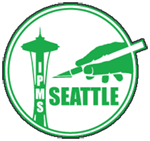What do y’all use for taping canopies? I used to use Bare Metal Foil (BMF), but it has been sticking too hard and leaving adhesive residue that’s very hard to remove.
My attempts with Tamiya Tape and MagicMask have been less than stellar in their effectiveness. So, what do you folks do?

Mark Doremus:
Last several attempts included Eduard masks (good) Vallejo liquid mask (so-so), MicroScale liquid mask (so-so), Tamiya tape (OK), blue painter’s tape (so-so). The masks and the Tamiya tape do need to be handled with care as the edges like to pull up. The Vallejo dried nearly clear, so I had to re apply to make sure it got to the edges. The MicroScale was thick and hard to spread to the edges. One of the liquids, possibly the microscale lifted adjacent paint when I removed it on the Model 314, it was hard to get the painted over masks off. On the Model 314, I wanted to use tape for the cockpit windows, but the edges were too hard to find, I used one of the liquids over the whole thing and tried to paint the frames in by hand after removing the masks.
Jim Bates:
Aizu tape for the outlines with liquid mask to fill the centers
Tim Nelson:
I still use BMF for “busy” canopy framing, but detack it against my palm before application. For simpler canopies or flat windows, I use small Tamiya or Aizu tape strips and cut shapes. All are tedious, but the kits I build are generally too obscure for aftermarket masks.
Max Platts:
Depending on the kit, Eduard makes excellent mask kits. In my opinion they are well worth the money. They fit quite well. If there isn’t a kit, I use Tamiya tape. What I have found that works well is take a small piece of tape and put it over the flash bulb on your smart phone and then turn the flashlight on and the set it on the table. You can then hold the canopy over the light and easily see the frames. Also be sure to use a very sharp knife.
Spencer Tom:
I was using Parafilm-M for a long time. You have to get a feel for it, which a lot of people seem to complain about. At the same time, it’s pretty easy to shape. You do, however, need to have a really sharp knife and “good hands” on the day you are masking. Recently, I tried some of the liquid masks. I”m not especially happy with them. You need to make sure that you cut around the maskng area to keep the lines clean, and the type of mask needs to be picked carefully based on the adhesion and removal needs of the job at hand.
Christopher Joseph Bucholtz:
I use really thinly-cut lengths of Tamiya tape to outline frames, then fill in the blanks. Not foolproof (as evidenced by the fact that the fool typing this has found ways to mess it up).
Terry Moore:
I use Tamiya tape exclusively and always use a brand new blade when cuttting – either Xacto or a scalpel blade.
Pat Murphy:
I also use Tamiya strips and Eduard masks when available. For removing adhesive residue, i use skin oil from my forehead. Sounds a little crazy but it works. Sorry but you will have to use your own forehead.
Morgan Girling:
Neil,
I have two answers for you:
1. Regarding the adhesive residue from using BMF (my go-to for canopy masking),
a. I take a tip from Tim and lightly score the edge of the foil mask before “chipping” it away with a toothpick to get a clean edge, and
b. I lightly moisten a cotton swab with lighter fluid (naphtha) and wipe the residue off.
2. I generally don’t mask canopies. Instead, I use clear decal film. I first spray a light coat of the interior color, and after dry, follow it with a coat of the exterior color. Give that a day or two to dry, then cut into strips the width of the canopy framing and apply like any decal. I do it one axis at a time (e.g., side to side, let them dry overnight, then fore and aft and let them dry overnight). For framing gussets as found on a T6, I follow up with squares cut from the same film, applied as diamonds over the framing intersections. At 1:72 scale, you’ll notice the gussets, but not that they aren’t radiused.
Spencer Tom:
Morgan, thanks for posting this. I do remember you telling me about the technique, but I actually thought you were talking about another application – This time, everything makes sense.